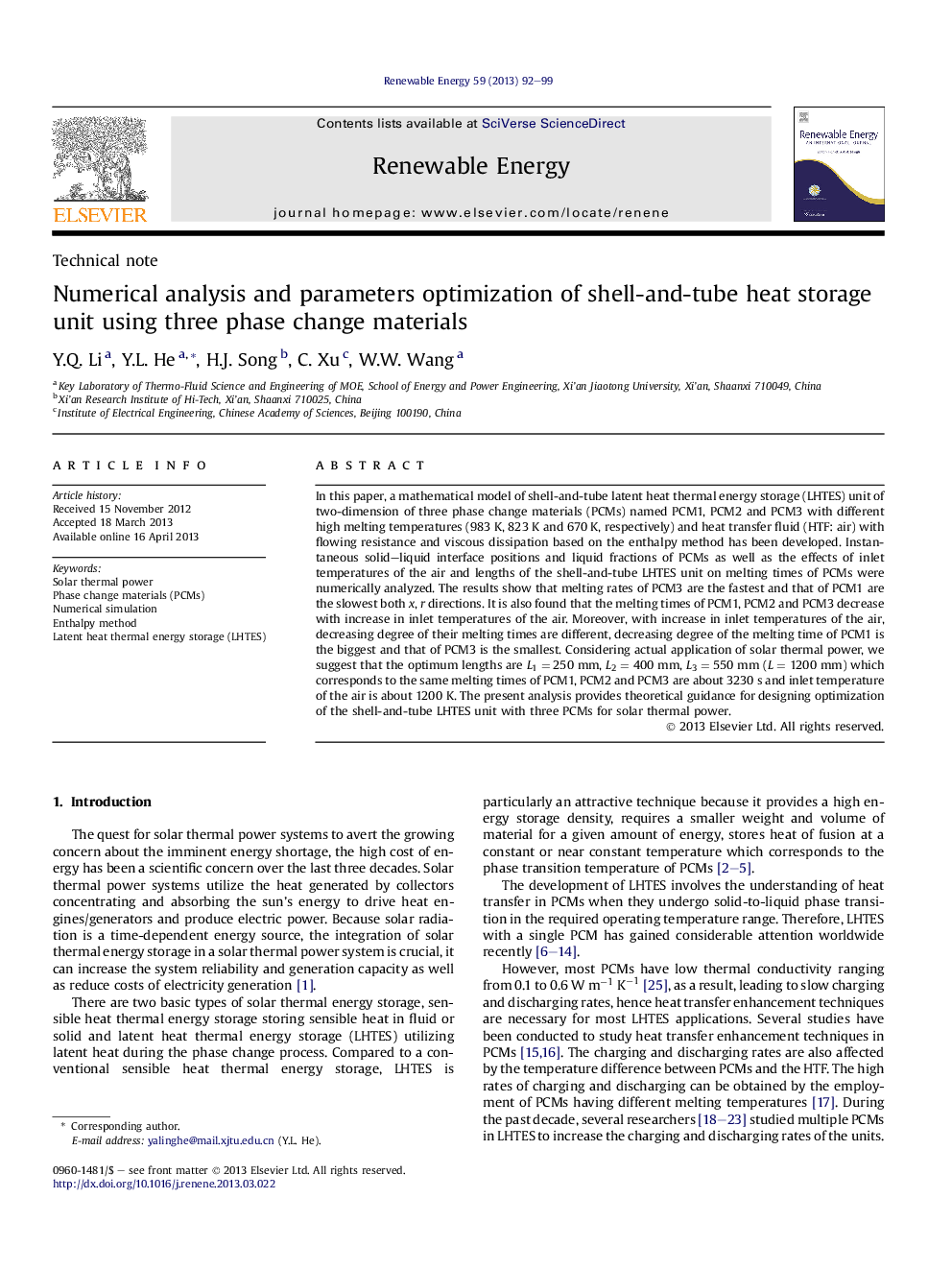| Article ID | Journal | Published Year | Pages | File Type |
|---|---|---|---|---|
| 6769203 | Renewable Energy | 2013 | 8 Pages |
Abstract
In this paper, a mathematical model of shell-and-tube latent heat thermal energy storage (LHTES) unit of two-dimension of three phase change materials (PCMs) named PCM1, PCM2 and PCM3 with different high melting temperatures (983Â K, 823Â K and 670Â K, respectively) and heat transfer fluid (HTF: air) with flowing resistance and viscous dissipation based on the enthalpy method has been developed. Instantaneous solid-liquid interface positions and liquid fractions of PCMs as well as the effects of inlet temperatures of the air and lengths of the shell-and-tube LHTES unit on melting times of PCMs were numerically analyzed. The results show that melting rates of PCM3 are the fastest and that of PCM1 are the slowest both x, r directions. It is also found that the melting times of PCM1, PCM2 and PCM3 decrease with increase in inlet temperatures of the air. Moreover, with increase in inlet temperatures of the air, decreasing degree of their melting times are different, decreasing degree of the melting time of PCM1 is the biggest and that of PCM3 is the smallest. Considering actual application of solar thermal power, we suggest that the optimum lengths are L1Â =Â 250Â mm, L2Â =Â 400Â mm, L3Â =Â 550Â mm (LÂ =Â 1200Â mm) which corresponds to the same melting times of PCM1, PCM2 and PCM3 are about 3230Â s and inlet temperature of the air is about 1200Â K. The present analysis provides theoretical guidance for designing optimization of the shell-and-tube LHTES unit with three PCMs for solar thermal power.
Keywords
Related Topics
Physical Sciences and Engineering
Energy
Renewable Energy, Sustainability and the Environment
Authors
Y.Q. Li, Y.L. He, H.J. Song, C. Xu, W.W. Wang,
